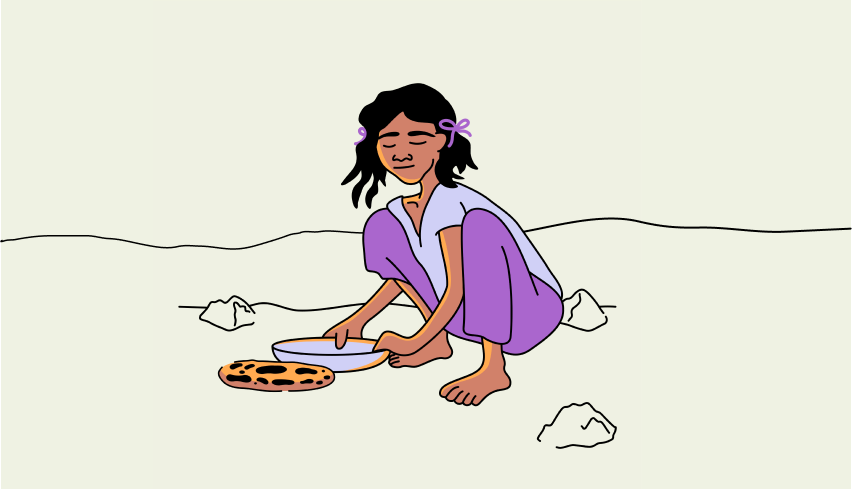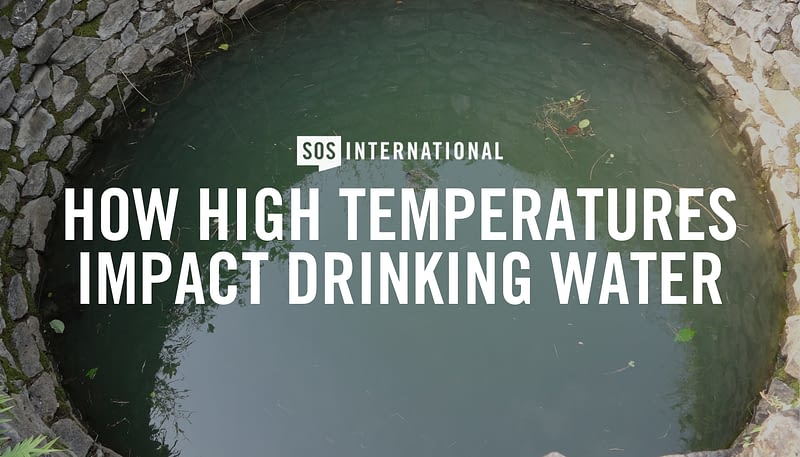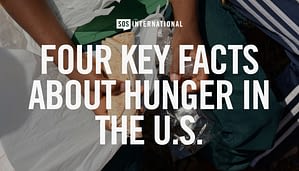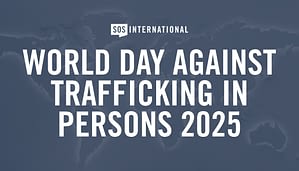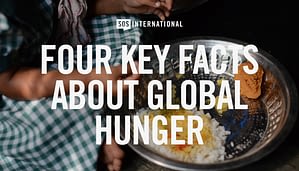Written By: SOS International
While Summer brings challenges for children who experience a hunger gap, there is another vital resource that faces increasing challenges due to the hot temperatures. High temperatures can have a profound impact on water supply and quality, affecting regions worldwide. While water changes affect everyone, water disruptions pose an even greater threat to those already living in water-stressed environments.
Effects on Water Supply
Every year, we hear stories about reservoirs or rivers reaching low levels due to drought and heat. For many parts of the world, Summer brings drier conditions with limited rain. The hot summer sun heats water sources, such as rivers, lakes, and reservoirs, causing them to evaporate more rapidly than usual. To add to the high temperatures, the heat dries up and hardens the soil, resulting in parched ground that absorbs any rainfall it can get, which means less runoff into the dwindling water sources.
High temperatures also mean that more people are drinking and using water to cool off, raising the demand for drinking, watering plants, and even for activities like water balloon fights. All of this water consumption puts even more strain on water supplies.
Effects on Water Quality
Water quality is another casualty of the summer heat. When summer arrives, with sweltering heat persisting for a few months, it allows for the exponential growth of harmful algae and bacteria.¹
As mentioned earlier, water levels tend to be lower in the summer, meaning that, as water levels dip, existing pollutants will start to concentrate. When combined, this can impact drinking water sources, creating unsafe drinking water that can expose people to waterborne diseases. This can also affect the water used for crops, where water quality is crucial for growing healthy food.
While many cities have water systems that filter the water, they can’t entirely filter out pollutants. This is especially true as the heat adds more contaminants to the water, making it less effective. It’s also worth mentioning that water infrastructure is at risk where it exists. Prolonged heat can wreak havoc on pipes, causing them to burst and potentially leak metals like copper into the water system, while also resulting in water loss due to damaged piping.²
Who is Most Vulnerable?
Even in places where water supplies are abundant, water pollution is treated, and pipes are in good condition, there remain 2.2 billion people worldwide who lack access to clean drinking water.³
SDG ladder for drinking water services (UNICEF Data)⁴
SAFELY MANAGED
Drinking water from an improved source that is accessible on premises, available when needed, and free from faecal and priority chemical contamination
BASIC
Drinking water from an improved source, provided collection time is not more than 30 minutes for a round trip, including queuing
LIMITED
Drinking water from an improved source, for which collection time exceeds 30 minutes for a round trip, including queuing
UNIMPROVED
Drinking water from an unprotected dug well or unprotected spring
SURFACE WATER
Drinking water directly from a river, dam, lake, pond, stream, canal, or irrigation canal
Nearly one in ten people rely on limited, unimproved, or surface water for their basic needs. For these individuals, there is nothing that can keep the heat from degrading the quality and quantity of the water they drink, among other factors. Even more astounding is the fact that many people walk for miles just to collect water from unprotected sources, which are often teeming with bacteria that cause waterborne diseases. The responsibility of gathering water often falls on women and girls, meaning they take these long, difficult trips on paths, and traffickers usually lie in wait to take victims.
Can you imagine a daily journey walking three miles, to and from a water well with dirty water, in sweltering heat, often at the risk of your or your child’s safety? Most people cannot fully grasp this idea, but it’s a reality for millions.
The need for close, safe access to water is a necessity for the health and safety of at-risk children and their communities. Safe drinking water isn’t a commodity but a necessary building block for securing the future of an at-risk child. At SOS, we collaborate with communities to develop solutions, including drilling wells, installing water filtration units, providing emergency water tankers, and other initiatives. By creating custom solutions, communities can have sustainable water sources that provide clean water and keep them protected from the manipulation of human traffickers.
Sources
1. BBC. (2022, August 17). Windermere: Harmful algae spreads across lake in heatwave. BBC. Retrieved June 27, 2025, from https://www.bbc.com/news/uk-england-cumbria-62560942
2. Baddour, D. (2023, September 8). The summer’s record heat has caused costly damage to Texas water systems. The Texas Tribune. Retrieved July 22, 2025, from https://www.texastribune.org/2023/09/08/texas-heat-city-water-pipes-damage/
3. World Health Organization (WHO). (2019, June 18). 1 in 3 people globally do not have access to safe drinking water – UNICEF, WHO. World Health Organization (WHO). Retrieved June 27, 2025, from https://www.who.int/news/item/18-06-2019-1-in-3-people-globally-do-not-have-access-to-safe-drinking-water-unicef-who
4. Access to drinking water – UNICEF DATA. (2023, July 5). UNICEF Data. Retrieved July 22, 2025, from https://data.unicef.org/topic/water-and-sanitation/drinking-water/


